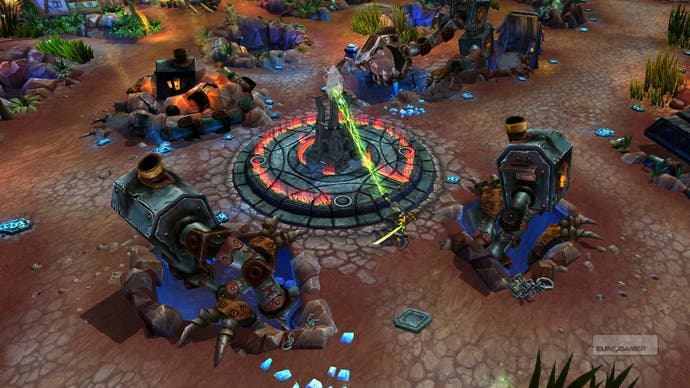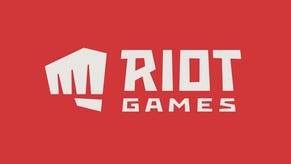League of Legends: Dominion
LoLers divide and conquer.
For many games or sports, one playing field is quite enough. A rugby, football or hockey pitch need never change, while the ageless simplicity of the chessboard belies the complexity of the many matches that have been fought across it.
To alter any of these gaming arenas would, depending upon your point of view, be either an act of sacrilege or an act of revolution. And anyway, they have never been the point of the game, never the focus. They exist only as a platform upon which the strategies, tactics and even personalities of their players can be pitted against one another in endless combinations.
Once upon a time this was the case for League of Legends, a game that only ever needed one map, and a map whose origins can be traced back to the aging Warcraft 3 mod Defense of the Ancients (DotA).
For years, DotA and LoL players were used to one field of battle, two bases and three different avenues of attack down which teams would charge their champions. Then, last year, developer Riot Games introduced Twisted Treeline, a smaller and tighter arena designed for three-on-three combat. There were few complaints from purists and LoL’s rapidly expanding community embraced both the new addition and the spirit of change that Riot demonstrated.
Now, with the announcement of League of Legends: Dominion, Riot has made Twisted Treeline look almost like an afterthought. Dominion is an entirely different way to play the game. Players must capture and hold five objectives on a brand new map known as The Crystal Scar. The task sounds very simple but, of course, the many possibilities that LoL’s various champions present make it both challenging and complicated.

This represents an enormous addition to a game that has been traditional, almost conservative in adhering to its DotA-influenced style of play, and where the focus has almost always been on the development of new characters or new tactics. This Riot has started a revolution, and one that has arrived at just the right time.
When League of Legends first launched it occupied something of a niche. While LoL has not only grown from some 55,000 players per month to over 500,000 concurrent players, it has also seen the first signs of competition. Games like Heroes of Newerth and Demigod try to push into a market it previously lorded over, a genre its developers like to call MOBA: Multiplayer Online Battle Arena.
A Valve offering is now waiting just around the corner, boasting a former DotA designer on its development team, so it makes perfect sense for Riot to put a fresh spin on things - and the timing's perfect.
If he’s worried about the competition, Riot co-founder and president Marc Merrill certainly doesn’t show it. He’s full of excitement about the imminent release of Dominion, articulate, enthusiastic and excited to shake up the MOBA genre. He's a man driven by the enormous community that LoL has built and by Riot’s ambition "to be the most player-centric games company in the world."

"There’s constant pressure to get things out for the community, because we want to keep people engaged and excited. If there’s any secret [to our success] it’s that we actually respect the player and try to deliver value. It’s not about us, it’s about them," he says. "When you’re a gamer, you get so frustrated when a developer isn’t listening to you. We encourage every employee to publish on the forums and directly engage with users. We’re not aware of any other company that does that. We think it’s healthy."
No wonder, as this is something that has constantly shaped LoL and will likely further shape Dominion. "We play League of Legends a heck of a lot, but they play it way more than we do. That’s one of the reasons it’s so important to us to have this great dialogue. We think it’s a great asset to the company."
Those LoL players are certainly in for a surprise, perhaps even a shock. It’s immediately obvious that the feel of play is quite different. While player versus player combat would often tip the balance on LoL’s other maps, here it can waste valuable time. In the midst of a fierce fight, sneaky players can outmanoeuvre those tied up in combat and, in just a few seconds, sit on an objective until they’ve captured it. Players working in unison capture objectives even quicker and a much stronger emphasis is placed on situation awareness and interception or disruption.









